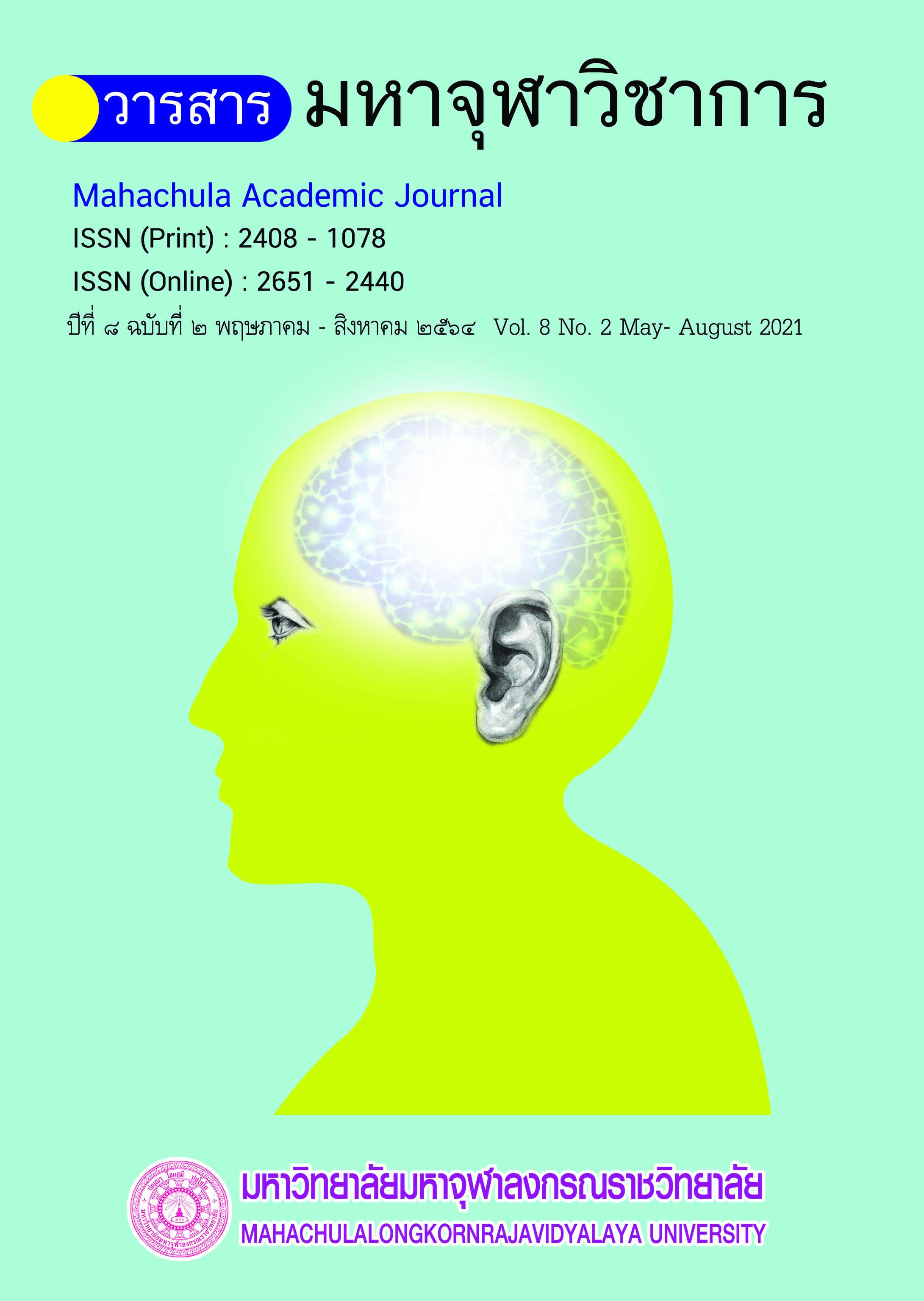An Analytical Study of Pali and English concerned with Grammar
Main Article Content
Abstract
The objectives of this research article were: (1) to study Pali and English on grammar (2) to study Pali and English words and sentences; (3) to study the use of Pali and English words and sentences. This was a qualitative research concerned with words and sentence, parts of speech of Pali and English. The contents of Pali grammar were nominal stem indeclinable stem, finite verb, participle, compound and secondary derivation and parts of speech in English.
Results of research were found that parts of speech of pali were parts of word-class namely nominal stem, indeclinable stem, finite verbs, participle, compound, secondary derivation. There are 8 parts of speech in English namely noun, pronoun, verb, adverb, adjective, preposition, conjunction, interjection. Sentence structures of pali were subject verbs object and the object is before main verbs(S+O+V) and finite verbs consist of conjugations, tense, pada, numbers, persons, root, voices and suffix with verbal derivation and noun derivation. Sentence structure of tense is present tense, past tense and future tense and 12 tenses in sub-total. Voice of tenses was active voice, passive voice, causal passive voice and impersonal voice but Voices in English were active voice and passive voice. The active voice sentence was modal the vocabulary used by the subject, Sūtho othanaṁ pacati.The chef cooks rice. Passive voice: Sissēn sīppaṁ sīkhiyate. The art is studied by a student. Nominal stem of pali was divided into English of noun, pronoun and adjective group. The Indeclinable stems that cannot be classified into 7 modes were indeclinable stem namely prefix, particle and suffix classified into English of adverb, preposition, conjunction and Interjection but finite verbs were term to know verbs that were main verbs and participle as word-formation of suffixes and roots to became noun and verbs and both of these were classified into verb English. A compound word is an abbreviation of nouns and adjective nouns were together to form a unit. Secondary derivation was formed from a substantive by adding other suffixes. The both of compound and secondary derivation classified into English of noun were word-formation from compound and modified case-noun. A compound word is an abbreviation of two or more chapters forming a noun and a noun into a single chapter.
Article Details
References
ธัญญรัตน์ ปาณะกุล,รศ.ดร. ภาษาศาสตร์ภาคประวัติเบื้องต้น. พิมพ์ครั้งที่ ๓. กรุงเทพมหานคร : สำนักพิมพ์มหาวิทยาลัยรามคำแหง, ๒๕๓๕.
นเรศ สุรสิทธิ์,ผศ.ดร. “การศึกษาเปรียบเทียบโครงสร้างระหว่างภาษาบาลีและภาษาอังกฤษ”. รายงานการวิจัย. วิทยาลัยราชพฤกษ์, ๒๕๕๖.
บุญสืบ อินสาร,ป.ธ.๙. บาลีไวยากรณ์. พิมพ์ครั้งที่ ๕. นนทบุรี : สำนักพิมพ์สืบสานพุทธศาสตร์, ๒๕๔๗.
พระมหาเทียบ สิริญาโณ,ดร., ป.ธ.๙. การใช้ภาษาบาลี. กรุงเทพมหานคร : โรงพิมพ์มหาจุฬาลงกรณราชวิทยาลัย, ๒๕๔๗.
พระมหานิยม อุตฺตโม,ป.ธ.๗. หลักสูตรย่อบาลีไวยากรณ์. พิมพ์ครั้งที่ ๔. กรุงเทพมหานคร : สำนักพิมพ์เลี่ยงเชียง, ๒๕๒๓.
Balangoda Ananada, Mahamaitreya MahanayakaThero. PALI MEDE EASY, Translation by Lee W.R.Thought of constructive linguistics in the context of foeign Language Teaching. Report of the nineteen Annaul Round Table Meeting on Linguistics and Language. Washington D.C.Georgetown University Press, 1968.
Prof.A.P.Buddhadatta Mahanayaka Thera. The New Papi Course Parts II,III. Translation by Assco.Prof.Nilratana klinchan. Buddhist Cultural centre,Shri Lanka, 2012.


